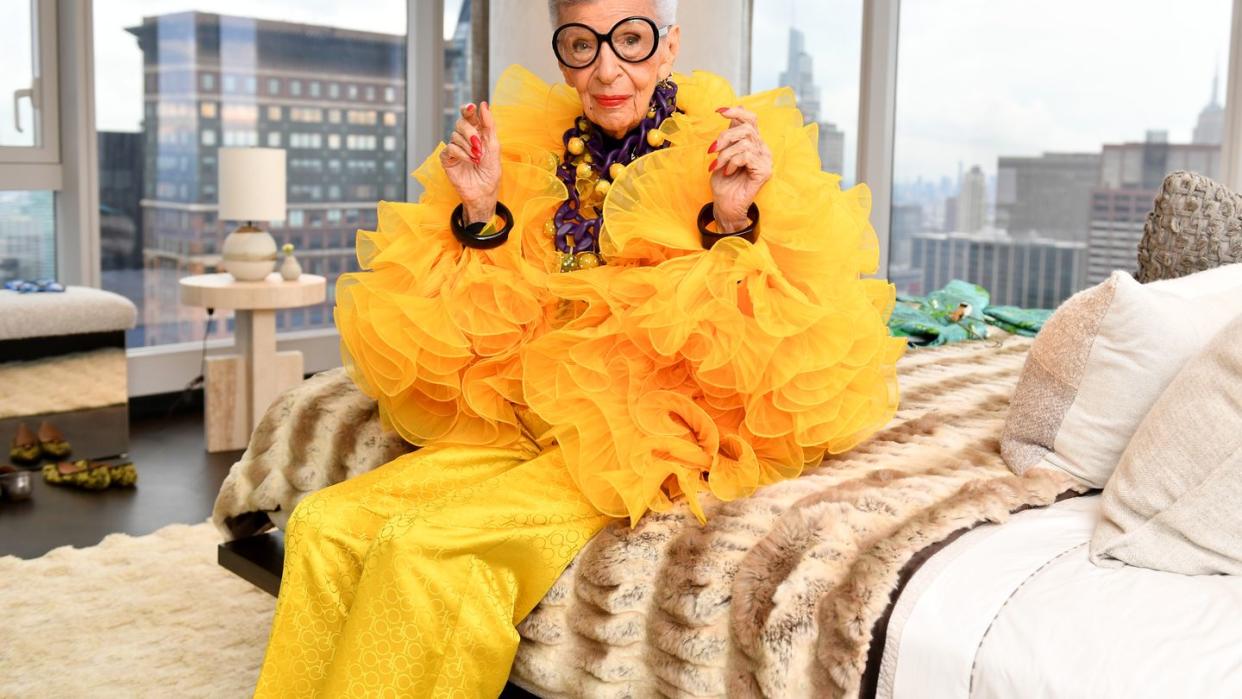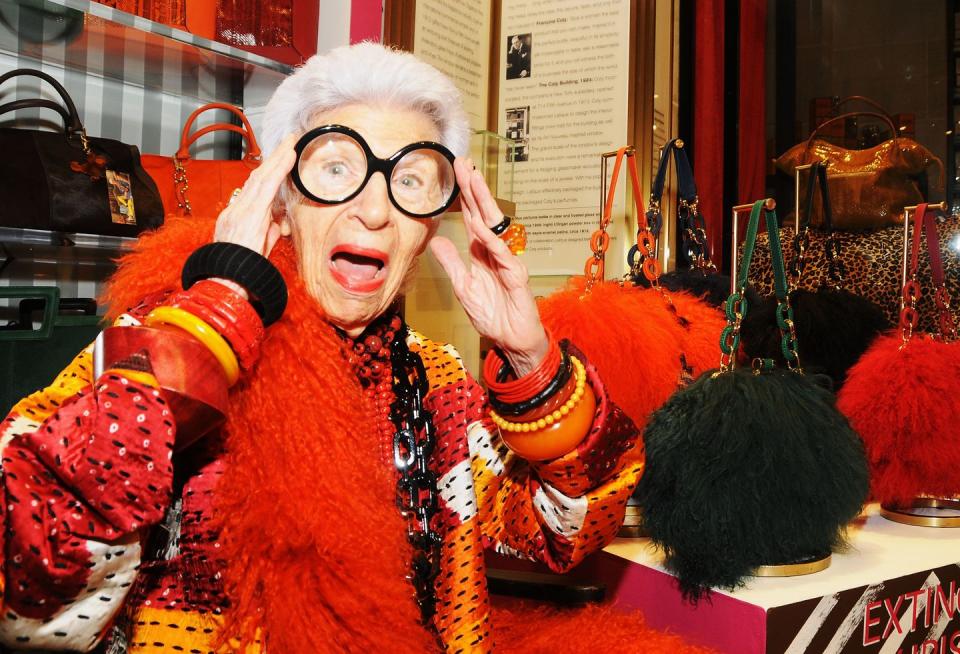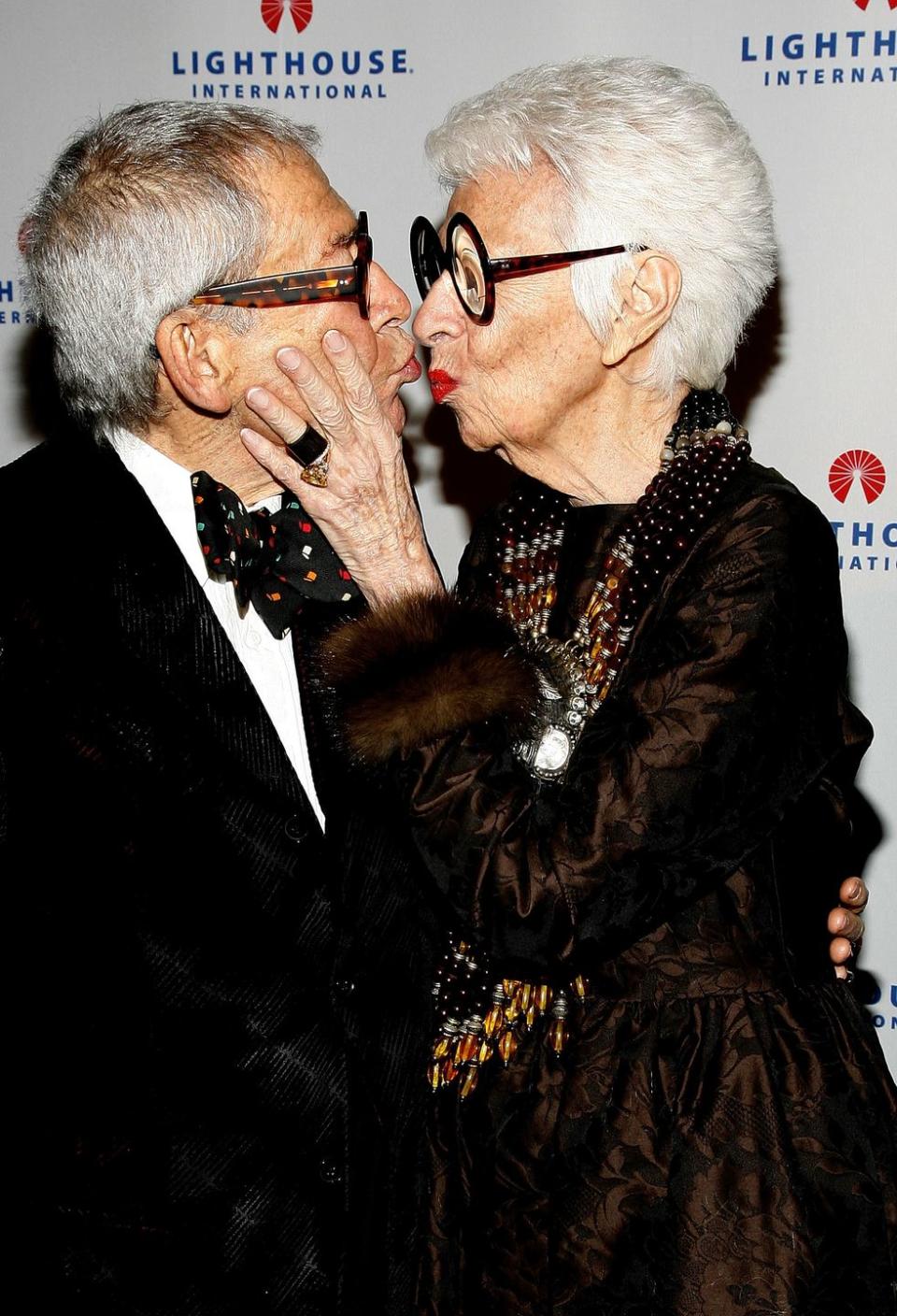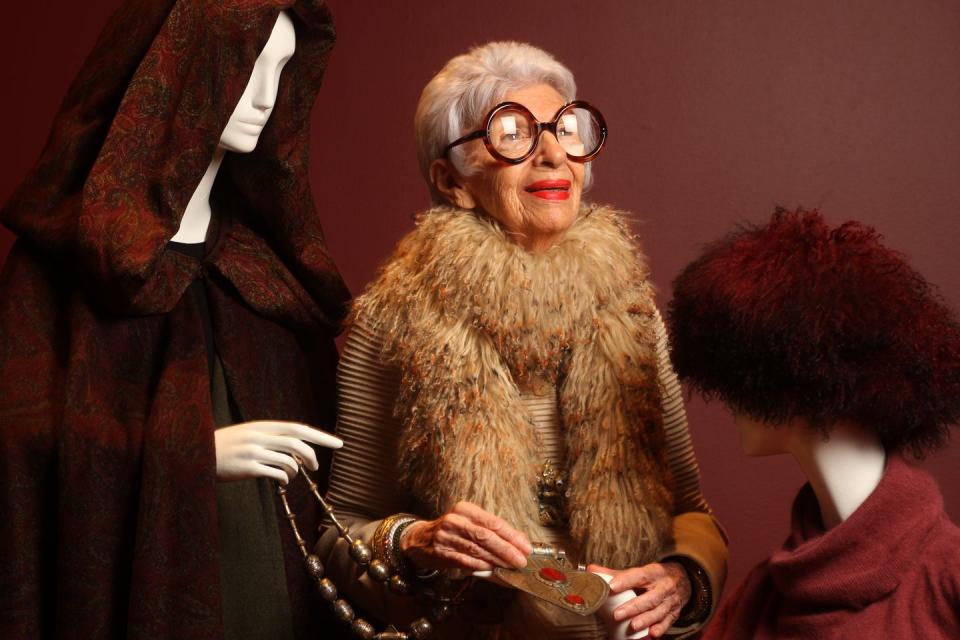Before She Was a Fashion Icon, Iris Apfel Was a Decorating Star

"Hearst Magazines and Yahoo may earn commission or revenue on some items through these links."
Long before she was a centenarian style icon—instantly recognizable with her oversized oval glasses, frosted blue eye shadow, feather boas, and arms stacked with chunky bangles—Iris Apfel was a trendsetter in a different realm: the world of decor. Apfel, who died March 1 at the age of 102, started her decorating career in the 1940s and was the designer of choice for such private clients as Greta Garbo, Estée Lauder, Faye Dunaway, and Joan Rivers. With her late husband, Carl, she founded Old World Weavers, a luxury fabric company that furnished textiles to the White House under nine presidents, from Harry Truman to Bill Clinton. “Fashion and interior design are one and the same,” she once said.

Born in Queens, New York, in 1921, Apfel was the original thrifter; she started her extensive jewelry collection as a child visiting antiques shops in Greenwich Village. By her early teens, she was also passionate about decorating and antiques. When her father, who was in the glass business, was hired to install mirrors at Elsie de Wolfe’s apartment in the Plaza Hotel, he convinced the legendary decorator to let him bring his daughter to meet her at home. The encounter made an outsize impression. “I was in my early teens, and of course my eyes almost popped,” Apfel recalled in an interview with designer Hutton Wilkinson for Charlotte Moss’s book Home: A Celebration. “She had Blu Blu [her poodle] in her lap…and Elsie would sit there like she was holding court. She would never get out of bed.”
Apfel married Carl in 1948, and the two used to travel overseas together to source furniture and fabrics for her interior design projects. “They would travel first class on transatlantic cruises so they could meet potential clients,” says David Duncan, an antiques dealer and lighting designer who was a former neighbor of the couple. “She had a shop in New York selling fabrics and things that were wildly expensive. She always had panache.”
The Apfels founded Old World Weavers in 1950, just two years into their marriage. They had started out sourcing rare antique fabrics for interior design projects from European flea markets but realized there was a market for reproductions of historical designs. In midcentury New York, when “modern” was all the rage, the Apfels carved out a niche of their own for richly traditional—“old world”—textiles like silk brocades, lampas, geometric motifs, suzani and ikat patterns, and Japonesque styles. “They had very luxurious fabrics that no one else had,” says Ann Pyne, president of McMillen Inc. “They were the only company that had those early Gilded Age designs. And they were right there in the D&D Building.”

In the 1960s, they had a runaway hit with what became their most iconic pattern: their “Tiger” silk velvet, a bold black-and-gold 54-inch-wide pattern handwoven in Venice, Italy. Apfel later turned the Tiger velvet into a coat for the Peabody Essex Museum in Salem, Massachusetts, which houses a permanent collection of more than 1,000 pieces of clothing and accessories worn by Apfel and her husband. Other fabrics, including a gold silk damask, were shipped to the White House for the East Room, where they still drape the windows.
Old World Weavers was acquired by Stark in 1992 and is now run under the Scalamandré textile group, which merged with Stark Fabric in 2017. In the early days of the Stark acquisition, Ashley Stark—granddaughter of the company’s founders and the current Stark creative director—interned with the Apfels, who continued to work for Old World Weavers. “[Iris] had the most impeccable taste and sense of style,” Stark says. “The biggest thing she taught me was to be fearless and to trust myself.”

Lorraine Lang, executive vice president of design for Scalamandré and Old World Weavers, also worked with the couple from 2000 to 2005. “She would say her famous line—‘More is more and less is a bore’—all the time,” Lang recalls. “She truly would. She always picked the unusual fabrics, the bolds. She looked for patterns that made her smile. She didn’t like anything boring.”
Everything changed in 2005, when Apfel was the subject of a fashion exhibition at the Costume Institute at the Metropolitan Museum of Art, “Rara Avis: Selections from the Iris Apfel Collection.” The show included pieces from her own wardrobe, a sui generis high-low mix of everything from Dolce & Gabbana lizard trousers to the plastic bangles she wore in stacks up and down her arms. Then in her eighties, Apfel became a full-fledged global celebrity, or what she herself termed an “accidental icon.” In 2014 she was the star of a documentary by Albert Maysles; soon, she had her own emojis, a huge social media following, and a Barbie doll created in her image.
Her interest in decor never waned. She kept homes in New York City and Palm Beach and created collections of everything from rugs for Ruggable to a “Maximal Couture” line of fabrics and trimmings for Fabricut. “They were the most outrageously decorated homes,” Stark says. “At Christmas, there wasn’t one inch not covered in ornaments, train sets, figurines, and tchotchkes. Her homes were pattern on pattern on pattern. That’s how she dressed, and it’s how she lived."
In 2017, when she was 96, ELLE DECOR covered the launch of Apfel’s first furniture line, for HSN with Cloth & Company. The circus-themed collection included upholstered pieces in bold stripes and a floral pattern adorned with elephants and circus tents. “Decorating your home,” she told us at the time, “is a way to express your personal style.”
As much as Apfel enjoyed the limelight of her later decades, she didn’t always understand it. “I think she was surprised by the fame,” Stark says. “ ‘Why now?’ she would ask us. She had lived like this always. She was always a free spirit. There aren’t many people out there like her.”
You Might Also Like

